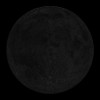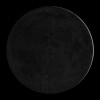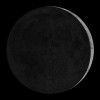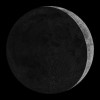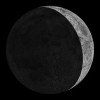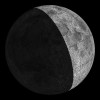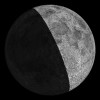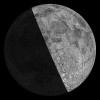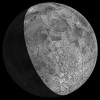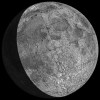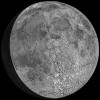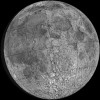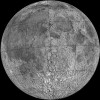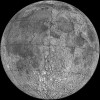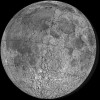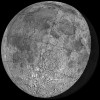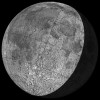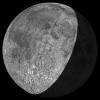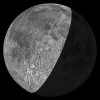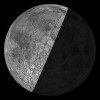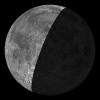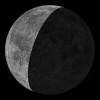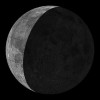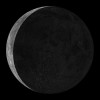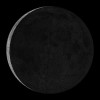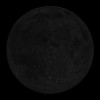The Hawaiians in traditional times used a calendar based upon the phases of the moon. The year had twelve months of 29.5 phases; every three to six years, a thirteenth lunar month was added. Each month started with the new moon, Hilo and ended with Mauli or Muku, the dark moon.
The moon phases continue to guide present-day fishermen. Below is a description of the moon phases and the fishing practices associated with each.
HILO
- The Hawaiian word Hilo has three meanings: Hilo was a famous Hawaiian navigator, Hilo can mean “twisted” or “braided,” and Hilo is the “first night of the new moon.”
- Good beach and reef fishing; women hand-fished; men torch-fished.
- Low tides in the evening and rough seas during the day; calm, warm nights with little wind.
- The Kapu – Kū period of olden days, in honor of the god Kū, forbade planting or fishing during this time, which continued through Kū Lua.
HOAKA
- As with all words in Hawaiian, the word Hoaka has many meanings. The most literal meaning is “crescent,” and this is, indeed, the first real crescent moon.
- Other meanings relate to spirits and ghosts. The Hawaiians believed the spirit of this moon—the first moon bright enough to cast a shadow—would frighten fish away. Thus, this was not a good night for fishing.
KŪ KAHI
KŪ LUA
KŪ KOLU
KŪ PAU
- The third through sixth moon phases correspond with the first four nights of Kū.
- The end of the first moon, Kū Kahi ends the kapu (forbidden) period of Kū.
- This series of four days also indicates good fishing.
‘OLE KŪ KAHI
‘OLE KŪ LUA
‘OLE KŪ KOLU
‘OLE KŪ PAU
- The seventh through tenth moon phase names all start with ‘Ole, which translates into “nothing” or “unproductive.”
- These days were named because fishing is poor due to high tides and rough conditions.
HUNA
- Huna means “small” or “hidden”
- This is a good time for fishing, as the fish tend to hide in their holes.
- Not a good time to seek esoteric knowledge, as answers sought will remain huna or hidden.
MOHALU
- The twelfth phase marks a sacred night to the god Kāne.
- This night is also good for fishing.
- The tides are very low in the early morning hours.
HUA
- Hua means “egg,” “fruit,” and “seed,” and among other things, refers to the near-full egg shape of the moon.
- This night is good for fishing, especially at sea.
- ‘Opelu run during Ka‘elo (January through early February).
- Reef fishing is good in the evening with indefinite tides.
- The Hawaiians believed in four full moons. Hua marked the first of the four full moons.
AKUA
- Akua means “God/goddess” or “spirit.”
- This is the second full Hawaiian moon and is near the full round shape.
- This is a good night for fishing, especially at sea and on reefs in the evening.
- Indefinite tide with high waves.
HOKU
- The third day of the four Hawaiian full moons was believed to be the fullest moon.
- Fishing is good at sea, not onshore.
- Watch for high waves.
MAHEALANI
- This sixteenth lunar phase was the last night of the four Hawaiian full moons and was good for all types of work, planting, and fishing.
- Excellent fishing. Tides are low in the late morning and late evening, making shoreline fishing easy.
KULU
- Kulu means “to drip, drop,” or “to pass time.”
- Deep sea fishing is considered good during this time.
- The currents run strong.
LĀ‘AU KŪ KAHI
LĀ‘AU KŪ LUA
LĀ‘AU KŪ PAU
- The Hawaiian word Lā‘au means just about any type of vegetation, trees, etc.
- Fishing is fair and the sea starts to become rough again.
- This late rising moon can be seen in the morning hours.
‘OLE KŪ KAHI
‘OLE KŪ LUA
‘OLE KŪ PAU
- Again we enter a series of three unproductive ‘Ole nights.
- Avoid planting and fishing; repair gear and equipment.
- Watch for Box Jellyfish and Portuguese Man-of-War on ‘Ole Pau.
KALOA KŪ KAHI
KALOA KŪ LUA
KALOA KŪ PAU
- The twenty-fourth through twenty-sixth lunar phases mark the three nights of Kāloa.
- Good fishing onshore, especially for shellfish.
- Watch for Box Jellyfish and Portuguese Man-of-War during these phases.
KANE
- The twenty-seventh lunar moon marks a two-day period of worship to the gods gods Kāne and Lono.
- This was a very strictly enforced kapu and most of this period was devoted to prayer to the gods.
- Good reef fishing with pole and torch.
- Very low tides.
LONO
- The twenty-eighth lunar moon continues from the previous night of worship to Kāne and Lono, with emphasis switching to the god Lono and prayers for rain.
- Excellent pole fishing, torch fishing, and diving.
- Low tides and calm seas.
MAULI
- This moon usually rises with daylight.
- All types of fishing were good on this day due to lower tides.
- Marriages were often performed on this day.
MUKU
- This final lunar phase ends the moon rising completely in the earth’s shadow.
- Excellent for all kinds of fishing, including diving for squid and octopus.
- The tides are low, which makes trapping fish in tide pools and loko i‘a (fishponds) easy.
Source: Kalei Nu‘uhiwa


